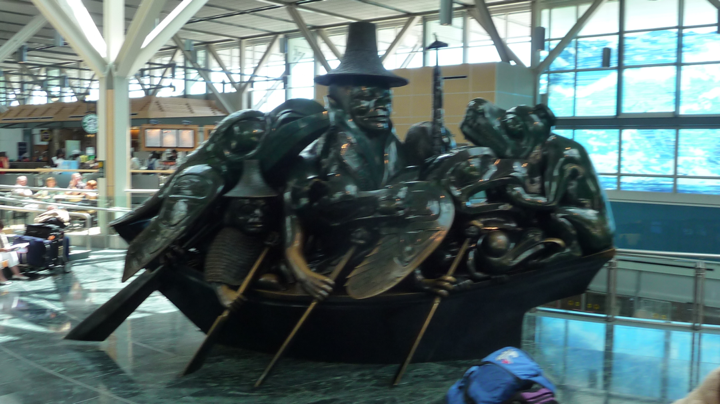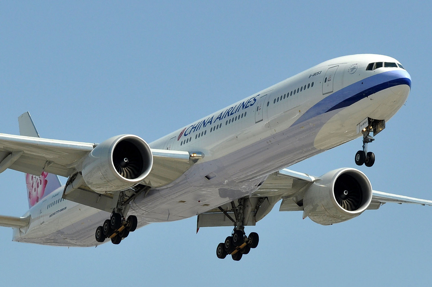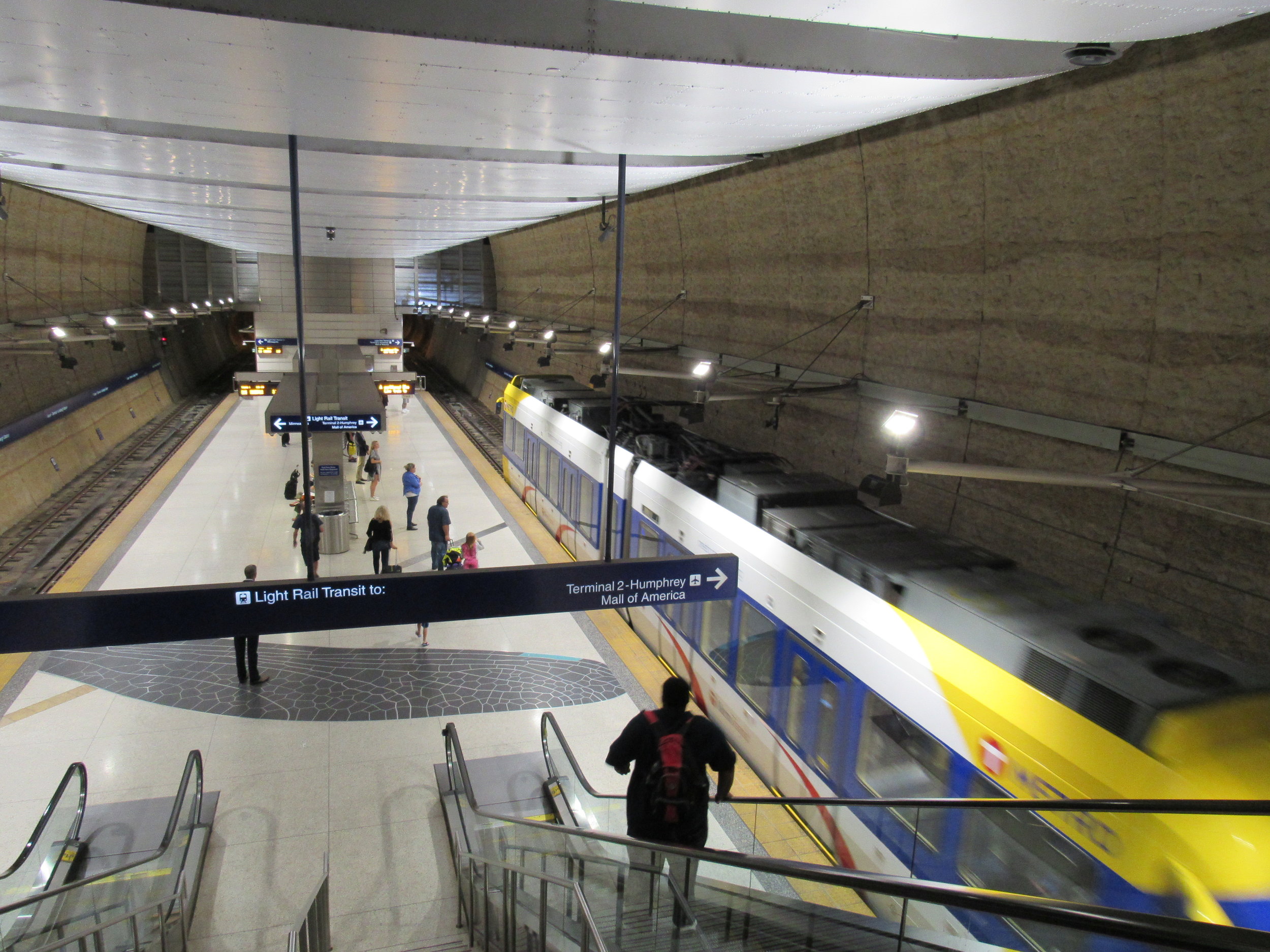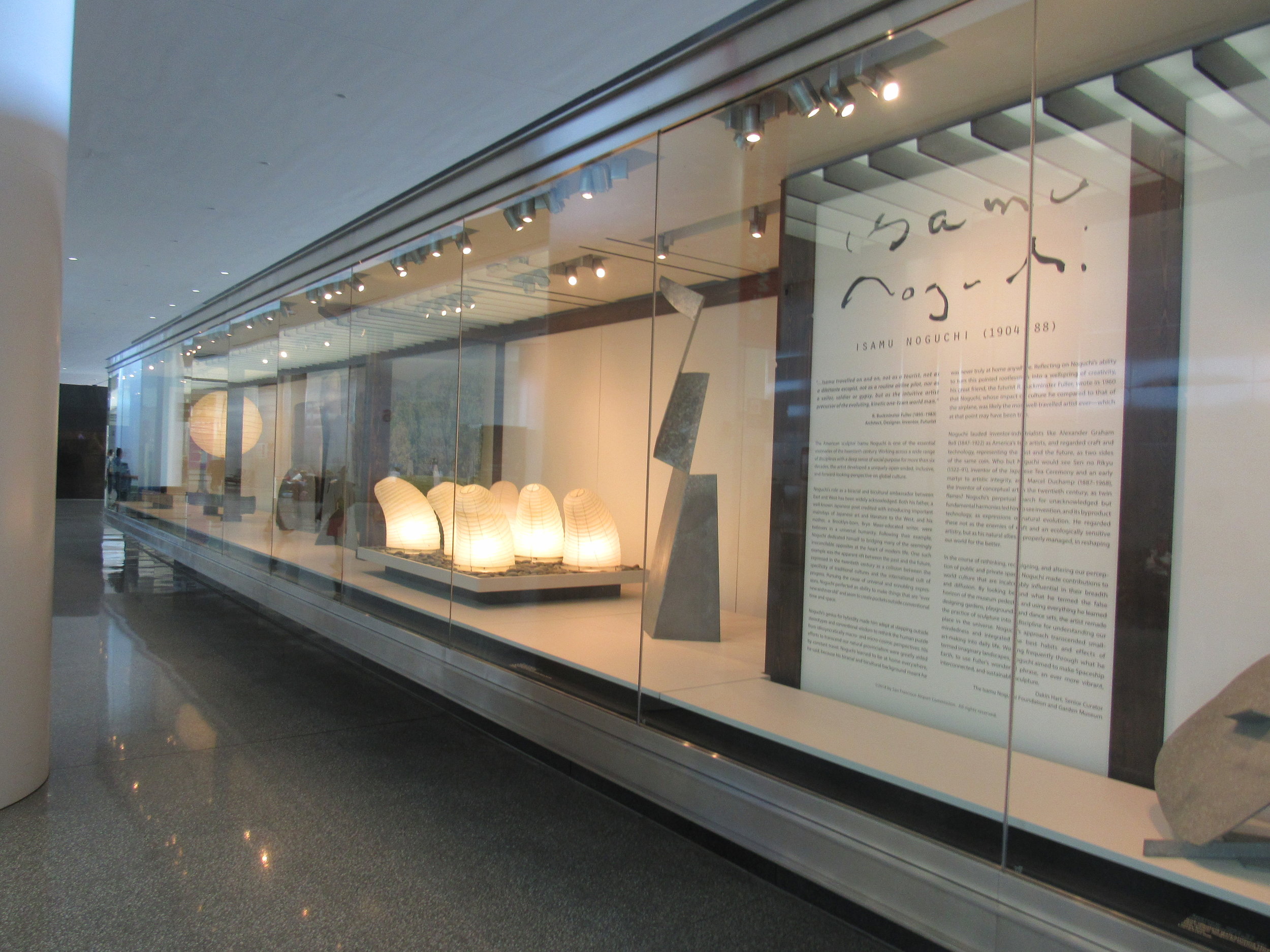Chicago O'Hare - ORD
/Spread your wings from the Windy City.
O’Hare is the second-busiest airport in America (after Atlanta), with excellent access to Asian hub cities. Multiple factors work to provide Midwestern fliers with plenty of competitive choices:
Chicago’s concentration of finance, manufacturing, distribution, and retail business has natural ties with Asia;
Its many higher-education institutions draw worldwide attendance;
Tourism brings in many from Asia - Chicago’s sports teams, museums, landmarks, and shopping are deservedly famous;
Significant Asian immigration - including the largest Chinatown in the central U.S. - drive visits in both directions from friends and relatives.
If you walk down Michigan Avenue and through Millennium Park, the second-most-common language you’ll probably hear is Mandarin!
O’Hare is a major hub for two of the three global airline alliances:
The Star Alliance, anchored by United Airlines (itself headquartered in Chicago), plus its partners ANA-All Nippon and Asiana, offer twice-daily nonstops to Tokyo-Narita, daily nonstops to Tokyo-Haneda, and daily nonstops to Seoul, Beijing, Shanghai, and Hong Kong. The Seoul and Beijing flights are especially convenient for making same-day connections directly to inland Chinese cities on partners Asiana, Air China, and Shenzhen Airlines. Fellow Star member EVA Air has started nonstop service to Taipei.
The oneworld Alliance, with American Airlines, Japan Air Lines, and Cathay Pacific, offers daily service to Tokyo-Narita and Hong Kong. American and China Southern have also become allies, but at the moment China Southern only flies a freight-only route to Chicago.
The third global alliance, SkyTeam, is also represented with Korean Air’s nonstop to Seoul. Korean Air flies directly from Seoul to many inland Chinese cities, and covers Southeast Asia comprehensively. China Eastern offers daily nonstop service to Shanghai-Pudong. Delta codeshares with both carriers.
Hainan Airlines is a rapidly-growing Chinese carrier not in one of the big 3 alliances, and it offers daily nonstops to Beijing. This carrier has also indicated it may possibly start Chicago-Chengdu service later in 2019-2020.
For domestic connections, both United and American operate massive banks of flights from ORD to all the major cities in the country. Incoming flights from Asia connect very well to the Midwest, Ohio Valley, and East Coast.
Customs Arrival
All flights from Asia arrive at Terminal 5. Getting off the aircraft, you’ll be directed down a hallway to passport control - about a 5-minute walk. U.S. citizens can take an express lane; expect a wait of 10 to 20 minutes, depending on how many other flights are being processed. (Most of the Asian arrivals get in before the rush of European traffic, so the odds are in your favor there.) If the lines look long, you may want your partner to scout out the other side of the arrivals hall; offices block the view.
Picking up bags and working through the declarations line (plus random screening) can take as little as 10 or as much as 60 minutes, again depending on traffic and staffing.
If you have a domestic connection, look for the baggage re-check counters; each of the major carriers has one. This will save you a lot of time for your next flight.
There are two exits which both open up to the public reception area. If Chicago is your final destination, walk out the door and head home; otherwise follow the signs to the ATS (Airport Transit System) tram station for access to the rest of the complex. [ UPDATE: The ATS system is being overhauled through Fall 2019. Follow the signage to a free bus connector to access the other terminals. ]
When the ATS system is brought back online, it will run about every five minutes; from Terminal 5 it will take about five minutes to get to the far end at Terminal 1. The ATS can get a bit crowded; you may need to wait for the next train.
Budgeting two hours for international-to-domestic connections gives you enough wiggle room for delays and clearing security for your next flight.
Navigating the Airport
You could compare O’Hare’s layout to an octopus; outside of the International Terminal, there are three domestic terminals and eight concourses arranged in a semi-circle.
Heading from Terminal 5 on the ATS, you’ll first stop at Terminal 3 - American Airlines’ base, plus Alaska, JetBlue, and Spirit. Terminal 2 is the home of Delta and Air Canada. Finally, Terminal 1 is the base for United Airlines.
United and American use their Terminal 1 / Terminal 3 gates for international departures, so on your outbound flight this is where you’d start from. (United’s Star Alliance partner ANA-All Nippon also uses Terminal 1 for its Tokyo departure, and American's oneworld partner JAL has its Tokyo departure from Terminal 3.)
Security lines in the terminals can be very long, especially at the checkpoints in the middle of each building. You can sometimes find shorter waits by trying the checkpoints at the far ends of the buildings.
Once through domestic security, you have access to all three terminals. The concourses are long; they were all designed to handle jumbo jets so the space between gates can be a long haul. If you have a stroller, this would be a good airport to use it in. Only the connector between concourses C and B have moving sidewalks. There is a shuttle bus running between the E concourse and the far end of C, for passengers flying on United Express.
Kids love going through the connector tunnel between concourses C and B; the neon lights overhead and wall panels pulse and dance in time with variations on Gershwin's "Rhapsody in Blue".
Family-friendly Amenities and Hidden Gems
You’ll find a very large play area in Terminal 2 just outside the security checkpoint and entrance to Concourses E / F, with stairs and slides, places to crawl, sit, view the action outside and burn off energy.
Another gem is the walkway connecting Terminal 2 to Terminal 1. Here there is also less foot traffic, a nice view of the tarmac, many benches to sit on, and kids’ artwork of the city displayed on the tall glass walls. The space is both peaceful and full of creativity at the same time.
In the middle of Terminal 1, look up to see the full-size skeleton of a brachiosaurus towering over everything else - you can get right up next to it and walk around its legs. (You’ll find its brother outside the Field Museum of Natural History downtown.)
The "Hall of Flags" along American's concourses H/K is also fun (when foot traffic is light). How many can you recognize? American also dresses this area festively for the winter holidays.
The rotunda between Terminals 2 and 3, where Concourse G connects, has an upstairs area where they have set up an indoor farm for greens that are used in the airport's restaurants. This is a most unexpected and calming place to get away from the crowds downstairs. It has a great view as well, plus a dedicated yoga room off to the side, if you need to literally unwind.
At the far-eastern end of United's "B" concourse, gates b19-20, you'll see a long art installation called "City Windows" by Qiao xiaoguang. it is based off traditional chinese papercuts and features scenes from both chicago and beijing. lots of details for kids to hunt for!
Restrooms
Even in the newer sections of the complex, stalls in men’s and women’s restrooms are narrow, have no shelving to set a bag on, and are equipped with one thin coathook; very difficult to maneuver yourself and your child. While the restrooms are generally never too far of a walk, you should always anticipate having to wait for a toilet.
In the older sections (E and F concourses in particular), the walls and doors of the stalls are still made of wood! Even the H/K concourses where American has made some gate and dining upgrades, the restrooms show heavy wear and tear, and door locks are unreliable.
Lighting is adequate and the toilets and sinks are generally in good condition. The toilets are all equipped with plastic sanitary liners that mechanically advance after use - it looks strange, and you’re sitting on cling wrap, but at least you know the seat is clean. For the rest of the restroom, cleanliness could be better.
O'Hare has been installing more unisex Family restrooms, and these are probably your better option with smaller children. In Terminal 1, they are near gates B4, B10, and C20. For Terminal 2, look across from the children's play area and also by gate E5. In Terminal 3, they are by gates G11, H3, H14, and L5. (There are also Family restrooms in the Terminal 1-2-3 baggage claim areas, outside security.) And in the International Terminal, there is one in the central food court.
Food and Shopping
O’Hare has made significant progress in recent years in the number, diversity, and quality of food choices. The deep-dish pizza and Chicago Dogs are no longer bland institutional facsimiles of native cuisine, but the real meals from the real restaurants. (I would rate the Reggio's deep-dish ahead of Uno Pizza Express...) There are three reasonably-sized food courts - one between the H and K concourses, one at the end of the K concourse, and one in the rotunda at the beginning of the G concourse (all in American Airlines’ territory), and a smaller, more-cramped court out in the middle of United's concourse C; but sit-down and fast food options are scattered evenly through the other two terminals as well. McDonald’s is headquartered in Chicago, so you know what you’ll see a lot of; but local chef Rick Bayless' Frontera Grill also has a couple outlets, so if you want great authentic Mexican food, that's a big plus.
Because you just can't get good Mexican food in East Asia.
The options are not as many for shopping; with no central “mall” most of your choices are of the newsstand / small electronics / scarf-and-tie variety, scattered throughout the complex. Concourse B has the most selection but more of those stores are selling luxury goods; probably not what you’re after on this trip...
Connectivity
WiFi is available through the Boingo network; you can get 30 minutes at low speed for free, but after that, or for any streaming you'd want to do, you'll have to pay for a package. Their servers remember your phone or laptop's IP address and won't serve you another free session for a full day...
The Chicago Transit Authority (CTA) Blue Line train runs from O’Hare to the downtown Loop 24 hours a day. The ride takes about 45 minutes, and from downtown, connections can be made to all other CTA trains. At intermediate stations, several CTA bus routes intersect the Blue Line as well. The Blue Line station is under the central parking structure and can be accessed from the baggage claim level of Terminals 1, 2, and 3. From International Terminal 5, take the ATS tram to Terminal 3 and follow the signs.
Metra trains on the North Central line can be reached by taking the ATS all the way out to its end at Economy Parking Lot E and then using a shuttle bus to reach the O'Hare Transfer Station.
The airport is also served by two Pace suburban bus lines. For more transit info, click this reference page.
Also see:
Our family-travel guide to Chicago's Chinatown
Our Pinterest board for Chicago
Transpacific Pioneers: United Airlines' acquisition of Pan Am's Asian routes in 1986
Transpacific Pioneers: United Airlines' first Transpacific services in 1983
























































































































